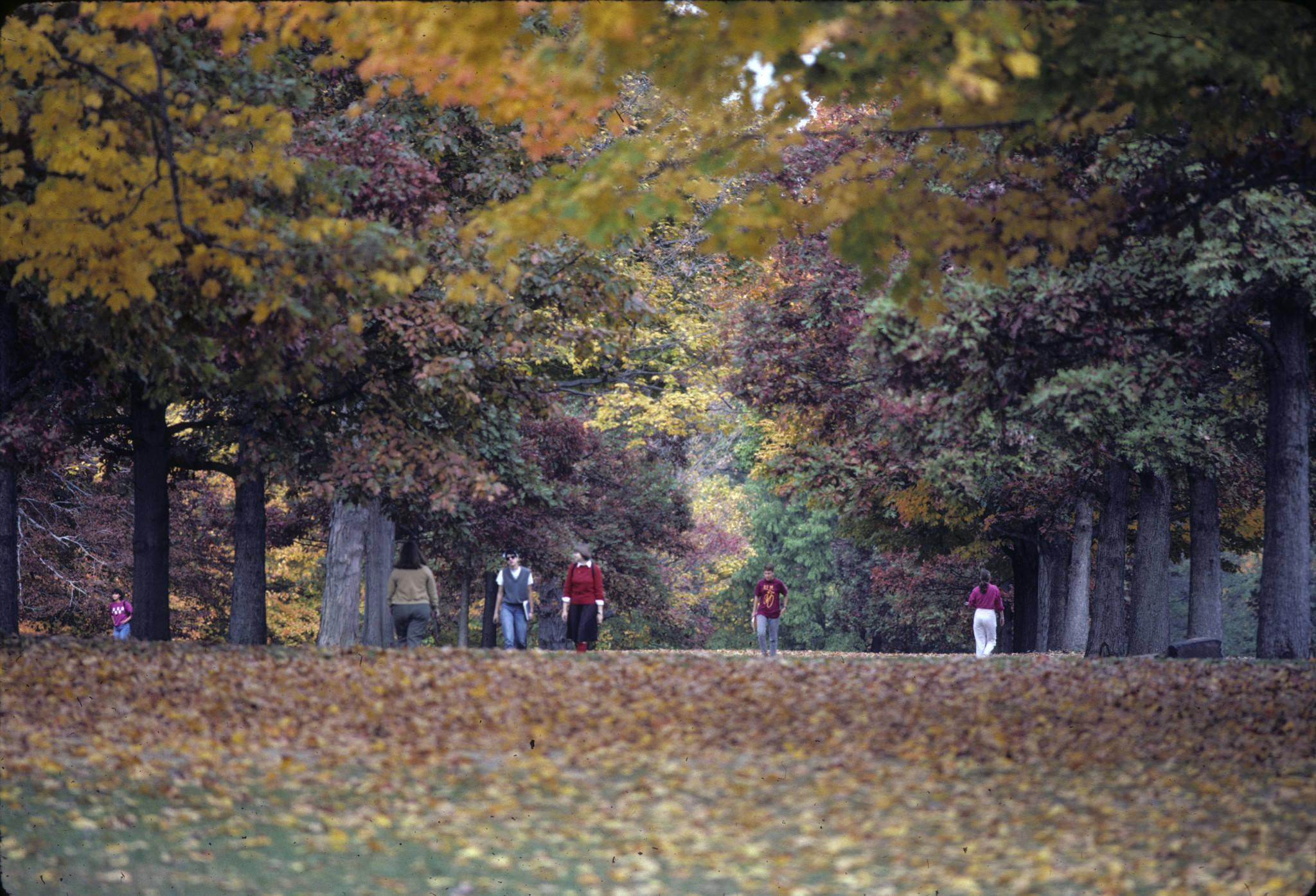By Anna Hsu, Staff Editor
It’s a beautiful summer morning. The breeze feels crisp and refreshing. The sweet scent of summer blooms drifts across the air, tickling the nostrils. Bryn Mawr’s campus is awash with color, and the eyes gleefully feast upon the picturesque canvas of verdant vitality.
Except for Senior Row. Between the two rows of towering maple trees lies a dusty, unkempt dirt path paved by the hurried footsteps of countless students. The school takes great efforts to keep the allée looking fresh for seniors, hastily setting up barricade tape in the futile struggle to replant. Fertilizer and grass seed are strewn across Senior Row and sprayed with pesticide upon sprouting. Water-hungry sprinklers are placed to provide the turf with sufficient moisture. It takes months for the field to reach its prime, but at long last an emerald swath triumphantly carpets the soil. Yet this victory is short-lived, as a sea of stomping feet immediately begins trampling the grass down the very moment the tape is removed. In the end, the Row is again reduced to a sorry mess of dirt.
Senior Row is not the only place on which the school struggles to replant grass in the hopes of maintaining a pristine campus. Students frequently trod a path through the grass between New Dorm and Haffner Dining Hall, resulting in a muddy, sloppy mess come wintertime. These problems could be remedied by simply creating stone walkways for students to use. This could save not only the aesthetic of the school, but also money and effort—reseeding grass costs up to $170 per 1000 square feet, not including costs of labor, fertilizer, and pesticides.
According to a report submitted by Bryn Mawr College to the Sustainability Tracking, Assessment, & Rating System (STARS) in 2017, only 53.96% of the total campus grounds are managed according to Integrated Pest Management (IPM) standards, and just 39.01% of the grounds are managed according to an organic program. Bryn Mawr College submitted no information on the institution’s approach to water usage, waste minimization, energy-efficient landscaping, or sustainable landscape practices.
Walking down Senior Row before senior year is considered a bad omen, and perhaps some might object that creating a path would invite absentminded students to unwittingly curse themselves to a fate of non-graduation. But people who believe in tradition will continue to avoid the path, and seniors (along with students who simply don’t care) will continue to walk down Senior Row, regardless of whether there is a path or not.
While the school’s efforts at landscaping are admirable, sometimes the best option is to yield when the situation is insurmountable. To quote Lao Tzu, “a tree that cannot bend will crack in the wind,” and likewise, “an army that cannot yield will be defeated.” Perhaps it’s better to be flexible and let the students have their way this time.
Image Credit: Bryn Mawr College Archives
